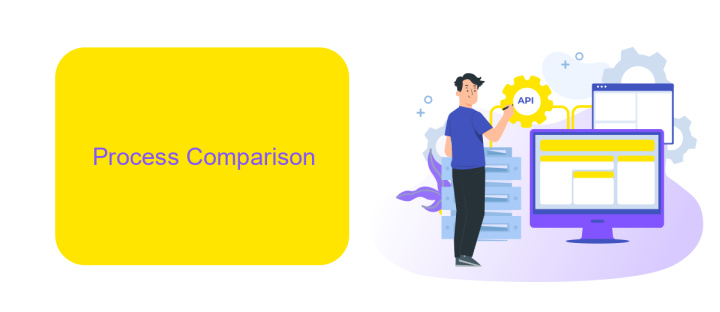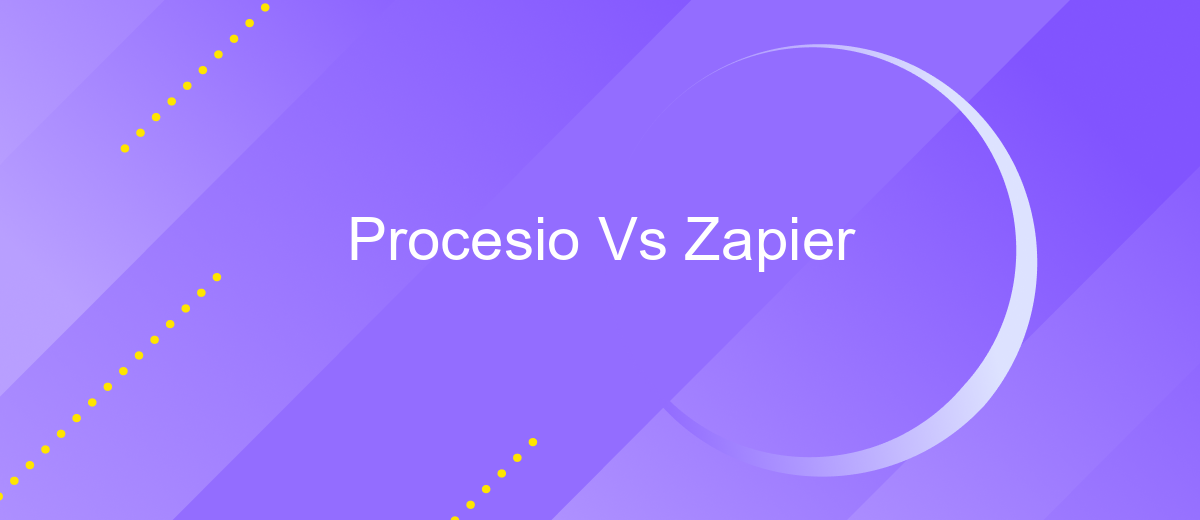Procesio Vs Zapier
When it comes to automating workflows and streamlining business processes, both Procesio and Zapier stand out as powerful tools. While Zapier has long been a popular choice for connecting various apps and automating tasks, Procesio offers a robust alternative with unique features and capabilities. This article delves into a comparative analysis of Procesio and Zapier, highlighting their strengths and differences.
Introduction
In the realm of automation and workflow management, choosing the right tool can significantly impact your productivity and efficiency. Two popular platforms that often come up in discussions are Procesio and Zapier. Both offer unique features and capabilities, but how do you determine which one is the best fit for your needs? This article aims to provide a comprehensive comparison to help you make an informed decision.
- Ease of Use: How intuitive is the platform for new users?
- Integration Capabilities: What services and apps can you connect?
- Customization Options: How flexible is the platform in terms of creating custom workflows?
- Pricing: What are the costs involved for different levels of usage?
- Support and Community: How robust is the customer support and user community?
One noteworthy mention in the field of integration services is ApiX-Drive. Known for its user-friendly interface and extensive range of supported applications, ApiX-Drive simplifies the process of setting up integrations, making it a valuable tool for businesses of all sizes. Whether you're leaning towards Procesio or Zapier, understanding the strengths and limitations of each can help you optimize your workflow and achieve better results.
Process Comparison

When comparing Procesio and Zapier, it's essential to understand their core functionalities and how they cater to different user needs. Procesio offers a robust low-code/no-code platform designed for process automation, allowing businesses to create complex workflows with ease. Its intuitive interface and advanced features make it suitable for users who require a high degree of customization and control over their automation processes. On the other hand, Zapier focuses on simplicity and ease of use, providing a wide range of pre-built integrations that enable users to connect various apps quickly. Zapier is ideal for those who need to automate tasks without delving into intricate configurations.
One notable alternative to both Procesio and Zapier is ApiX-Drive, a service that specializes in setting up integrations between different applications. ApiX-Drive stands out by offering an easy-to-use platform that simplifies the process of connecting various services, making it accessible even for non-technical users. With ApiX-Drive, users can create seamless data flows between apps, ensuring efficient and automated operations. This makes it a valuable tool for businesses looking to streamline their workflows without the complexity that might come with more advanced platforms like Procesio.
Feature Comparison

When comparing Procesio and Zapier, it's essential to consider their feature sets to determine which platform best suits your integration needs. Both tools offer robust automation capabilities, but they cater to different user requirements and preferences.
- User Interface: Procesio provides a more customizable and developer-friendly interface, while Zapier focuses on simplicity and ease of use for non-technical users.
- Integration Capabilities: Zapier boasts a vast library of pre-built integrations with over 2,000 apps, whereas Procesio offers a more flexible approach, allowing users to create custom integrations tailored to their specific needs.
- Scalability: Procesio is designed for scalability, making it suitable for complex, large-scale projects. Zapier, on the other hand, is ideal for small to medium-sized businesses looking for quick and straightforward automation solutions.
- Advanced Features: Procesio includes advanced features like workflow automation, data transformation, and API management, which are beneficial for technical users. Zapier focuses on ease of use and offers basic automation features without requiring coding skills.
- Support and Community: Both platforms offer extensive support and active user communities, but Procesio provides more in-depth technical support, catering to developers and IT professionals.
Ultimately, the choice between Procesio and Zapier depends on your specific needs and technical expertise. For those seeking a user-friendly tool with a wide range of pre-built integrations, Zapier is an excellent choice. However, if you require a more customizable and scalable solution with advanced features, Procesio might be the better option. Additionally, services like ApiX-Drive can further enhance your integration capabilities by providing seamless connectivity between various applications.
Pricing Comparison

When comparing the pricing models of Procesio and Zapier, it is essential to consider the value each platform offers for their respective costs. Procesio, known for its advanced automation capabilities, provides a more flexible pricing structure that can be tailored to different business needs. Zapier, on the other hand, offers a straightforward tiered pricing model that scales with the number of tasks and integrations.
Procesio's pricing is based on a pay-as-you-go model, which means you only pay for what you use. This can be particularly cost-effective for businesses with fluctuating automation needs. Zapier's pricing plans are more rigid, with predefined tiers that may not always align with the specific requirements of every business.
- Procesio: Pay-as-you-go, customizable plans
- Zapier: Tiered pricing, fixed plans
- ApiX-Drive: Flexible integration setup, cost-effective solutions
Ultimately, the choice between Procesio and Zapier will depend on your business's specific needs and budget. If you require a highly customizable and scalable solution, Procesio might be the better option. For those who prefer simplicity and predefined plans, Zapier could be more suitable. Additionally, ApiX-Drive offers an alternative for businesses looking to streamline their integration processes cost-effectively.
Conclusion
In comparing Procesio and Zapier, both platforms offer robust solutions for automating workflows and integrating various applications. Procesio excels in providing a more customizable and developer-friendly environment, making it ideal for complex and large-scale automation projects. Zapier, on the other hand, is known for its user-friendly interface and extensive library of pre-built integrations, making it a preferred choice for small to medium-sized businesses seeking quick and easy automation solutions.
For those looking to further streamline their integration processes, services like ApiX-Drive offer additional support. ApiX-Drive simplifies the setup of integrations between various apps and services, ensuring seamless data flow and operational efficiency. By leveraging the strengths of both Procesio and Zapier, along with the capabilities of ApiX-Drive, businesses can achieve a high level of automation tailored to their specific needs, ultimately enhancing productivity and reducing manual workloads.
FAQ
What are the main differences between Procesio and Zapier?
Which platform is better for non-technical users?
Can both Procesio and Zapier be used for enterprise-level automation?
Are there any alternatives to Procesio and Zapier for automation and integrations?
How do pricing models compare between Procesio and Zapier?
Strive to take your business to the next level, achieve your goals faster and more efficiently? Apix-Drive is your reliable assistant for these tasks. An online service and application connector will help you automate key business processes and get rid of the routine. You and your employees will free up time for important core tasks. Try Apix-Drive features for free to see the effectiveness of the online connector for yourself.

